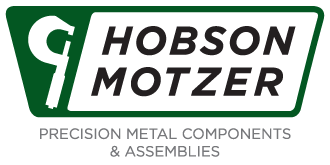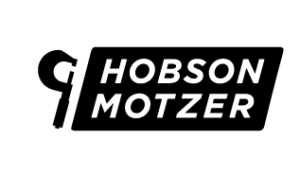Meeting excruciatingly tight tolerances on precision metal components for primarily medical and automotive customers, offering a vast array of value-added processes and meticulously tracking quality control allows this century-old stamper to stay young at heart.
Hobson & Motzer Inc., Durham, CT, has few peers when it comes to supplying quality-critical precision metal components, subassemblies and tooling. The firm specializes in coining stainless steel strip to unrelenting tolerances dictated by customers in the medical device industry. Building on its history of tool-and-die manufacturing expertise dating back to its 1912 beginnings, Hobson & Motzer turned its attention to metal stamping in the late 1970s. Since then, its development of value-added processes paired with its precision metal components expertise and lean operations keeps its customers wanting more. The 375-employee company has enjoyed continued growth over the years.
QUALITY-CRITICAL MEDICAL STAMPINGS
For its medical stamping customers, which account for 65 percent of Hobson & Motzer’s revenue, quality critical translates into tolerances as tight as +/-0.0001 in. For other customers – 20 to 25 percent of its work is automotive parts for fuel injectors, transmission cables, seat latches and fuel regulators – tolerances average +/-.002 in.
To ensure its presses and inhouse-designed and built dies meet these tolerances, on annual order quantities ranging from 100,000 to 20 million, Hobson & Motzer counts among its equipment inventory a microprocessor-controlled laser/vision magnifying inspection system. The unit, a Nikon NEXIV VMR 3020 model, is used for first-piece and in-process inspection and for PSC.
Hobson & Motzer has spent years developing expertise in near-net-shape stamping, to compete with processes such as screw machining, lapping, grinding and secondary operations. Coining stainless steel and making it flow precisely into complex 3D geometry has displaced screw machining in some applications. Also, precision shaving operations, which create optimum edge conditions, can replace more-costly lapping and fineblanking operations. Hobson & Motzer has been successful in coining stainless steel to less than 0.001 in. thick, which has allowed customers to eliminate secondary grinding operations.
The company designs as much work into its dies as possible to minimize or eliminate secondary operations. It cites one recent example where it eliminated seven secondary operations by combining them in a progressive die.
Meticulous record keeping, lot control and material traceability by the Hobson & Motzer quality-control department also are keys to its success with customers ordering quality-critical stampings. “It’s not so much ‘can you make the part?’” says Les Hyatt, director of sales and marketing, “it’s ‘do you have the right systems in place to ensure that the correct part will be made the first time, every time?’”
A part of its quality records, Hobson & Motzer keeps, at a minimum, a remarkable seven-years’ worth of inspection retains. These retains were taken from actual production runs at predetermined intervals. “Keeping these retains gives us a physical connection to previous production runs that paper or electronic documents alone cannot provide,” says Jim O’Brien, vice president of operations.
VALUE-ADDED PROCESSES
Hobson & Motzer offers a variety of secondary value-added services such as assembly, laser welding, tumbling and deburring, ultrasonic cleaning, passivation, CNC machining, plating, electropolishing, pad-printing and packaging. “We had specific goals in mind when we moved so heavily into value-added processes,” says Hyatt.” For example, we moved into laser welding of medical assemblies to better manage the production process and reduce manufacturing lead time.
“Of course, it’s not that simple to just decide that you’re going to become an expert in laser welding,” Hyatt continues. “We found the challenge was not so much the welding process, but the fixturing of parts for the laser welder. Fixturing, by nature of our tooling expertise, is a core competency, so mastering the laser-welding process came relatively quickly for us.”
Bringing value-added processes such as laser welding inhouse allows Hobson & Motzer to react quickly when customers change their schedules and place unexpected orders with particularly short lead times. It also helps the firm reduce its work in process and stay lean.
A LEAN PRESSROOM
The Hobson & Motzer pressroom has evolved into two fully stocked stamping bays. Its primary pressroom houses straightside Minster presses ranging from 30 to 180 tons. Its latest addition, a 180-ton Minster P2H straightside, was brought into the mix early in 2005. Recent upgrades in the primary stamping area include new controls and servo feeders.
The secondary pressroom houses knuckle presses rated up to 250 tons. “Because we have standardized our equipment,” says Bruce Dworak, engineering manager, “if one press goes down for an reason, we can easily reschedule work among the other presses.”
In 2001, Hobson & Motzer began its lean journey to improve efficiencies, and every employee t the firm received training in lean operations. The firm averages four to five lean events per year, focusing on setup reduction, 5S, value-stream mapping, cellular manufacturing, Kanban and TPM.
“While our labor costs have climbed substantially in the last four to five years,” says Hyatt, “as have energy and material costs, our margins have remained consistent without adding to the workforce, due to our lean initiatives.”
SOME SPECIFIC RESULTS FROM LEAN EVENTS:
- In purchasing, overhead has been reduced by 30 percent, inpart by eliminating paperwork redundancy and reducing the vendor base, and asking vendors, where appropriate, to implement vendor-managed inventory programs.
- Inspection time has been reduced by 30 percent, by streamlining inspection requirements for jobs that proved to be capable and stable.
- Cellular-manufacturing projects have, for some operations, reduced work-in-process by as much as 90 percent and annual inventory turns for the company have increased from eight to 12 within the last three years. “We have several more cellular-manufacturing projects targeted for the next few years,” shares O’Brien.
The firm has implemented Kanban deliveries with several key customers, and more than half of what it produces is on Kanban. “While this has probably doubled the number of die changes we execute daily, we’re more aligned with actual market demands for the products we product and, therefore, can more accurately schedule the work,” says O’Brien. Die-change times have dropped for Hobson & Motzer even as the number of die changes has increased.
As the company implemented Kanban systems and cellular manufacturing to reduce inventories, it found that preventive maintenance became more critical to improving on-time delivery performance, which now is consistently near 100 percent. The firm brought in a TPM expert to analyze its maintenance procedures and, based on his suggestions, it began work to enhance its already high-performing maintenance program. The aim was not just to maintain the equipment but ot make it easy for operators to perform daily maintenance. Among the improvements was placing stickers on all gauges on the presses that quickly and simples identify where each gauge should read during normal operating conditions.
“Now our operators can see at a glance if the presses are operating properly at any given time,” says Dworak. “We also implemented a design upgrade, moving counterbalance and air-pressure controls down to the operator’s levels so they are easy to adjust and maintain.”
SETUP REDUCTIONS
Setup-reduction events have, in most cases, resulted in a 60-percent reduction in the time required from the last piece of one part to the first good piece of the next. Many of the setup activities now are performed while the previous job still runs. Much of the teardown work of the previous job occurs after the next job is producing good parts.
Other setup-related improvements include the use of color-coded air and coolant lines that help operators quickly identify where the lines go. The firm also equipped toolmakers with tool carts that they can wheel right up to the presses so that they have every tool they need on and and ready to go – no wasted time walking to and from the toolroom in search of the right tool for the job.









